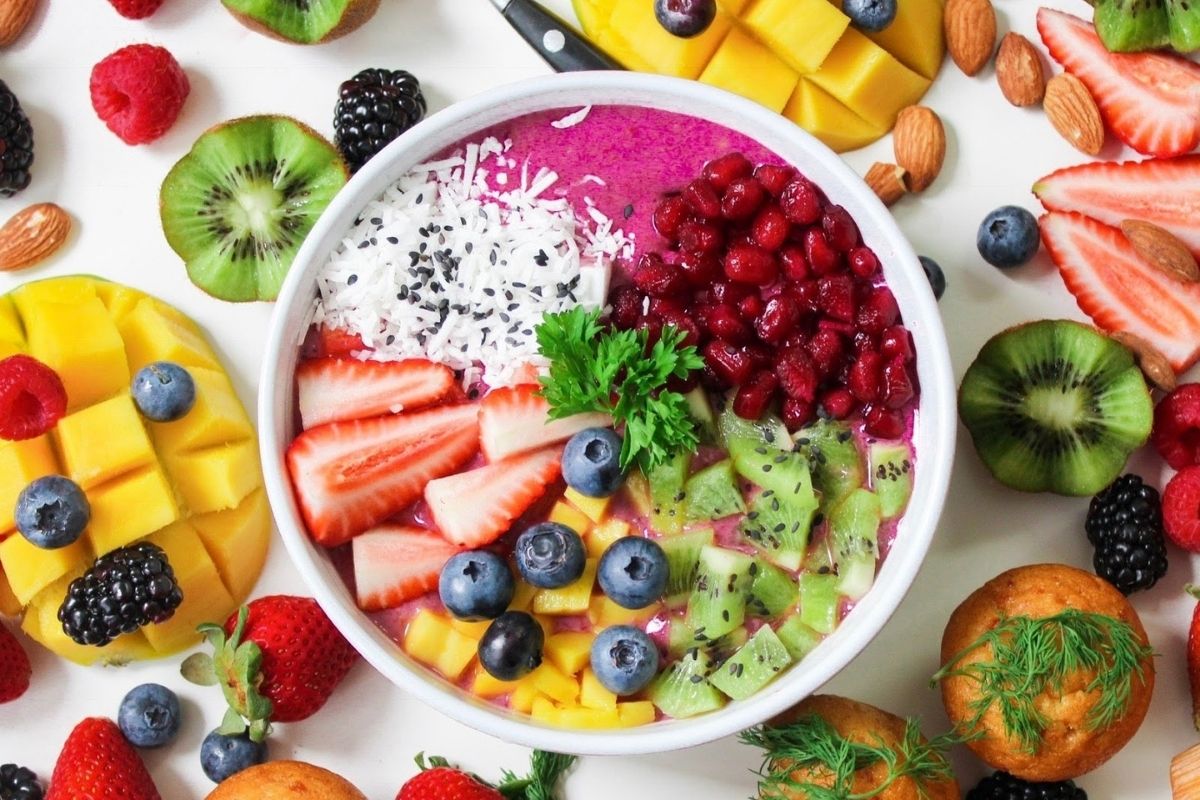
Quick Take
Heard that meat is the only good source of iron and that vegans are not getting enough of this essential mineral? This is a common myth and we're happy to dispel it. The truth is, there are so many vegan foods with iron and, as a bonus, they contain additional components that make the iron absorbable by the body in optimal amounts. So shake off the myths with us as we show you our top 7 iron-rich plant foods that you can easily incorporate into your plant-based diet!
Before We Begin: Get All The Nutrients You Need, No Meal Prep Required
Make going vegan easy with the MamaSezz Get Me Started Bundle. Reap the benefits of a plant-based diet without all the work and get fresh and delicious plant-based meals for beginners delivered to your door. No cooking required - just heat and eat. Get started today.
On This Page
What is Iron and Why Do We Need It?
Getting Enough Iron on a Plant-based Diet
7 Plant-Based Iron Sources to Add to Your Plate
Key Takeaways
What is Iron and Why Do We Need It?
Simply put, iron is a molecule that connects oxygen to hemoglobin in red blood cells. Red blood cells shuttle oxygen to different parts of the body bringing it to other cells so they can break down sugar and produce energy essential for the proper function of the whole body. This energy brings us vitality and helps us regenerate the body in case of stress or injury. If certain areas of the body don’t receive enough oxygen, over time symptoms of lethargy, fatigue, coldness, dizziness, and other signs of underperforming organs can develop.
As you can see, iron is nothing to be messed with! Luckily, it is easy to get enough plant-based iron. In fact, most plants we eat contain some iron, which adds up quickly on a plant-based diet.
Getting Enough Iron on a Plant-Based Diet
Yes, red meat is known for its iron content, but the argument that iron from meat is "better" doesn't actually hold up. While the iron found in meat contains the heme molecule allowing iron to be more absorbable by cells, it also gives the body less control of how much iron gets into cells, possibly leading to cell toxicity.
Non-heme iron found in plants, on the other hand, doesn’t have this problem! The body has much more control over how iron is absorbed by cells, so there is no danger of cell damage. This is because plants are composed of many different compounds, including specific vitamins, minerals, antioxidants, and phytochemicals, which can make the non-heme iron more or less absorbable by different cells.
7 Plant-Based Iron Sources to Add to Your Diet
It is not only easy but delicious to get your iron from plants! While there are plenty of vegan iron sources, we've rounded up 7 of our favorites to add to your healthy and balanced vegan diet.
1. Mulberries

Often ignored and considered an exotic fruit, mulberries are found growing in abundance in the United States and around the world. One of the fruits highest in iron (1 cup of fresh mulberries has 2.6 mg or 14% DV of iron), they are also loaded with Vitamin C and other compounds that help the non-heme iron enter cells much more easily, increasing the vitality of the whole body.
Dried mulberries can be found in many grocery stores and are wonderful as a snack or as a texture-enhancing sweetener in healthy vegan desserts (pie crusts, cookie dough, nice cream, smoothie toppings…).
Can't find mulberries? No worries. Most berries are high in Vitamin C and contain iron so go ahead and mix and match blueberries, blackberries, raspberries, currants, and other berries to boost your immunity and balance your nervous system.
2. Sesame Seeds

A staple of Middle Eastern cuisine, sesame seeds have become the Western world’s favorite seed because of our love for the undeniably yummy and addictive tahini! But there is so much more behind the satisfying taste – just one ounce of sesame seeds contains 4.1mg or 23% DV of iron. And the magic doesn’t end there. Sesame seeds are also high in other minerals like calcium, magnesium, zinc, and copper as well as the B Vitamins which, along with iron, play a crucial role in cell metabolism and neuronal function.
You can easily get sesame seeds into your diet by sprinkling them on your food but my favorite way is to buy or make sesame seed butter (AKA tahini) and use it in desserts as a cream substitute or as a tahini sauce in wraps and salads, and, of course, on the mighty falafel!
(Can't find sesame seeds? Other seeds, including pumpkin and sunflower seeds, are also high in iron so grab those instead!)
3. Parsley

A lot of people overlook this common but incredibly underused medicinal plant! One cup of parsley provides us with whooping 3.7 mg or 21% DV of vegan iron! When paired with soups, hummus, salads, and other savory dishes, parsley adds that familiar and comforting boost of flavor, as well as an unmatchable mix of nutrients. Due to its iron content, astringent properties, and very high amounts of Vitamins A, C, and K, calcium, potassium, and magnesium, parsley helps clean metabolic waste surrounding cells, oxygenating, nourishing and restoring tissue function.
Another excellent way to add parsley into your diet, fresh or dried, is to make an herbal tea. You’ll be pleasantly surprised by the soothing flavor of this simple beverage. Many other leafy greens such as arugula, spinach, and kale are also high in iron and other powerful nutrients so you can keep them in mind as great options for getting your daily plant-based iron.
4. Dates

A deliciously sweet powerhouse of nutrition and so easy to eat as a snack or add to desserts, dates are truly a marvelous fruit. They are not only a great source of plant-based iron (one serving of about 4 Medjool dates contains .9 mg or 5% DV of iron), simple sugars, polyphenols, and B Vitamins, but are also packed with fiber, a combination that helps oxygenate gut tissues, nourishing, healing, and regenerating them as well as improving the overall health of the body.
Dates are also one of the best refined sugar substitutes and are perfect to use in desserts because of their mild taste and low glycemic index. You can also make simple date syrup and add it to food as you would refined sugar. If you love dried fruit, you can also add other iron-rich foods such as raisins, dried apricots, prunes, and dried figs into your diet to expand your choices of texture and flavor.
5. Mung Beans

A versatile legume that can be eaten raw as well as cooked, mung beans originate in India and feature prominently in India’s delightful cuisine. Sprouted mung beans are one of my favorite additions to salads because of their crunchy and satisfying taste! Although raw mung beans have a huge amount of iron, cooking them can significantly lower the amount so making stews, curries, and soups is ideal since cooking water keeps most of the iron and other minerals. A cup of cooked mung beans still boasts 2.8mg or 16% DV of iron and is very high in B Vitamins folate and thiamin. B Vitamins have been found to play a major role in absorption and utilization of non-heme iron by red blood cells.
You can also use other beans and lentils such as chickpeas and red, yellow, and green lentils to change things up since most legumes are a great source of iron. Soaking beans and lentils before cooking also helps get rid of some of the growth-inhibiting factors and makes them so much easier to cook and digest.
6. Cacao

Cacao’s history and use as a revered staple and ceremonial food in the Americas hint at something very special about cacao. Just a tablespoon of raw cacao powder has .8 mg or 10% DV of iron. Raw cacao is also high in magnesium, calcium, and potassium, as well as the phytochemical theobromine which increases blood flow to the digestive tract tissue and the nervous system, nourishing and toning them.
Oh, and the high fiber content in cacao works with other components to make iron more absorbable by the gut, helping it stay clean and healthy.
When you feel like indulging in a bit of dark chocolate?
It's super easy to make your own vegan dark chocolate pudding using cacao powder.

Homemade Vegan Dark Chocolate Pudding
4 parts ripe banana (or seed/nut butter or avocado)
3 parts cacao powder
date sugar or syrup (optional, to taste)
cinnamon or other spices such as cardamom (optional)
Mix all the ingredients together in a blender and blend until smooth and creamy.
Refrigerate for a firmer texture.
7. Pomegranates

Pomegranates are such a beloved fruit that they have influenced art and culture in many countries, and have been a symbol of abundance, wisdom, and beauty throughout ages. Breaking open a pomegranate and eating the bright red seeds is indeed an experience like no other!
Pomegranates have been used in Ayurveda and other healing practices around the world to help reverse anemia. One medium pomegranate has .8 mg or 5% DV of iron which is much more easily absorbed by the body with the aid of the high fiber content, polyphenols, and other elements such as Vitamins C, K, and B, and minerals copper, manganese, magnesium, and phosphorus. These nutrients work synergistically for better gut health, heart function, and overall body wellness.
You can eat pomegranate seeds alone or add them to salads and Buddha bowls or you can juice them for a wonderfully refreshing drink. Can't find pomegranate? Grab a watermelon! It's another one of our favorite vegan foods with iron, plus it's loaded with other powerful nutrients -- not to mention it's super hydrating and revitalizing.
Key Takeaways
- Iron is essential for oxygenating our cells and creating energy for the proper function, health, and vitality of our body.
- It is easy to get iron on a vegan diet as many plants contain iron with other important nutrients such as polyphenols and Vitamins C and B that make it more available to our body.
- Heme iron found in meat can be toxic to our cells but this is not the case for the non-heme iron found in plants since its absorption is regulated by other buffering components of plants.
- There is a great variety of delicious vegan foods with iron you can add to your diet so you never have to worry about getting enough on a plant-based diet.
**
By Sebila Kratovac
Sebila is very passionate about plant-based food and how it can help us heal from the inside out. You can often find her creating new vegan dishes and infusing them with healing herbs and spices or just enjoying being in nature. She is also an ardent artist, dancer, performer, writer, and wellness practitioner.

